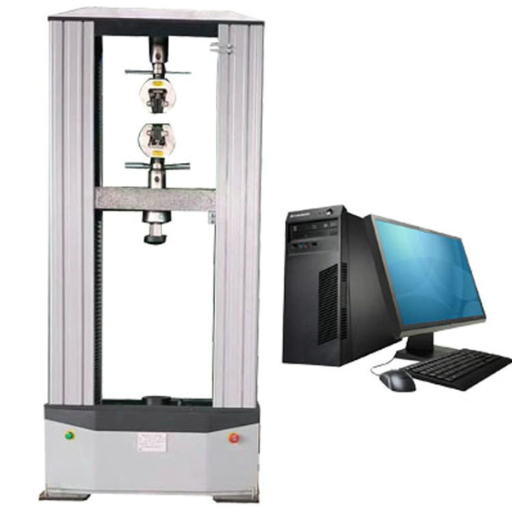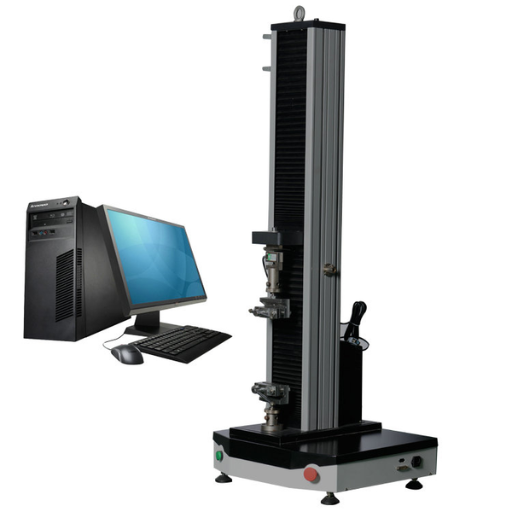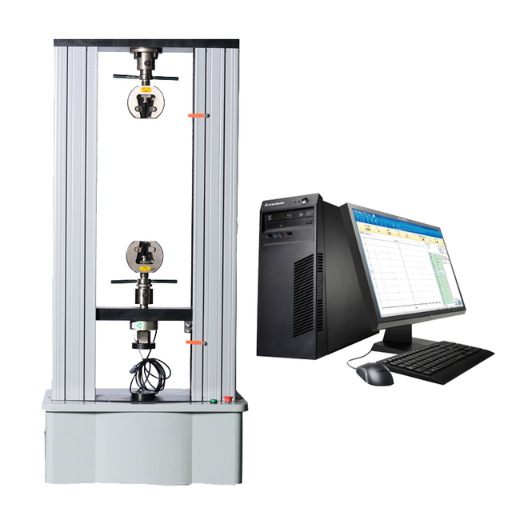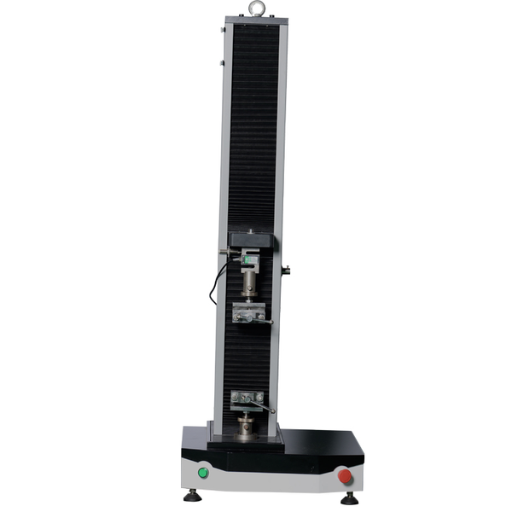Material testing is integral to mechanical engineering as a complex evaluation of recovering basic parameters in behavior, properties, and effectiveness of the material in question. It also aids engineers and manufacturers in resolving issues regarding materials and applications by collecting vital information during the design process to ensure maximum security, reliability, and optimal efficiency. Testing Parameters such as tensile strength, fatigue resistance and hardness provide insight towards a material’s elasticity which is important in making decisions in construction, automotive, aerospace and energy industries. This article focuses on the importance of material testing, including its methodologies with practical implications, while exploring its relevance in engineering. This comprehensive collection aims to equip the ready with pertinent knowledge on the significance of material testing in engineering for modern innovation and product optimization.
What is a Mechanical Test?

A mechanical test is defined as the assessment of a material’s physical properties and how it behaves when subjected to different forms of force or load. Strength, resilience, hardness, and toughness are some critical attributes of any material which is essential in knowing how well it is expected to serve in a given application. Common mechanical tests include: tensile testing (resistance to pulling force), squeezing force evaluation – sometimes known as compression testing, and impact testing which assesses the material’s ability to withstand rapid shocks. Validation of material performance occurs with these evaluations, alongside the verification that’s needed for diagnosed safety concern and aid in choosing the right material for engineering and manufacturing works.
Definition of a Mechanical Test
Mechanical testing includes a collection of systematic approaches to assess the physical characteristics and behavior of materials within certain circumstances. Out of all the methods, tensile testing is the most conclusive technique for estimating ultimate tensile strength, yield strength, and the elongation at break. In the same way, compression testing is important for describing the behavior materials for size reductive forces, commonly applied to brittle materials like ceramics. Another type is hardness testing, Rockwell or Brinell methods, which concentrates on evaluating surface deformation resistance giving indicator related to overall wear resistance. Fatigue testing is very significant in components that undergo cyclic stress, for instance stressed components, for measuring resistance to repeated loading and unloading over long periods. Applying these procedures make it possible for engineers and materials scientists to evaluate the mechanical properties comprehensively and ensure safety and longevity in practical use.
Purpose of Mechanical Tests
Their purpose is to conduct mechanical tests to evaluate material properties under specific forces and conditions to guarantee acceptable performance for the intended use. Testing enables one to establish and quantify the design, manufacturing and quality control parameters of instrumented structures including strength, ductility, hardness, fatigue life, and fracture toughness. Moreover, tensile tests are important in evaluating pulling forces while impact tests assess resistant to sudden loads or shocks. Mechanical testing is instrumental in predicting performance over long operational periods under service stresses. Moreover, structures and components should sustain service life while ensuring durability and safety. Enhanced imaging and computer-aided analysis improve the accuracy of engineering material selection and optimizing designs at the most demanding requirements.
Common Mechanical Tests Overview
The mechanical tests cover a broad spectrum of techniques designed to evaluate and measure material characteristics and their performance under different operating conditions. The most common tests are:
- Tensile Testing
The tensile testing determines a material strength through application of uniaxial force up to failure of the specimen. Some critical outputs the test include yield strength, ultimate tensile strength, and percentage elongation at failure, which together provide insight into the material’s ductility and capacity to bear loads.
- Compression Testing
This test assesses how a material responds to axial load compressive forces in relation to its compressive strength, modulus of elasticity, and deformation characteristics. This test is particularly useful on concrete, ceramics and metals which are prone to compressive loads in structural functionalities.
- Hardness Testing
Examining hardness as a wear—resistant test of performance within a material, its indentation is defining value is measured using the Brinell, Vickers or Rockwell methods. Such tests are critical in applications of wear during performance.
- Impact Testing
Energy absorption and toughness in fracture performance of a material can be assessed under sudden loading conditions using impact tests, Charpy, and Izod. Understanding performance under shocks and dynamic stresses is key in material behavior.
Due to developments in other fields of instrumentation and analysis, many of these tests now benefit from strain gauges, digital image correlation, and real-time monitoring systems. As a result, engineers and researchers have access to precise data that can enhance safety, reliability, and performance in materials used across different industries.
What are the Types of Mechanical Testing?

Mechanical testing has a variety of methods as tests to assess specific properties of materials. The following is a summary:
- Tensile Testing – Evaluates uniaxial strength and ductility through a tension test to failure. Also determines ultimate strength, yield point, and percentage elongation.
- Compression Testing – Describes the testing conducted on the material in order to evaluate how well it would function under various compressive loads to evaluate compressive strength and its deformational response.
- Hardness Testing – Deals with surface hardness assessment through Brinell, Rockwell, Vickers and such indentation and wear indulging methods.
- Impact Testing – Estimates toughness and energy absorption aptitude due to sudden shock, usually by Charpy or Izod.
- Fatigue Testing – Establishes cyclically loaded materials for endurance and performance to estimate their anti aging capabilities and failure susceptibility over time.
- Creep Testing – Looks at constant stress deformation over time to evaluate material behavior under heat over time.
Mechanical testing is especially useful for engineers to assess a given material’s use in specific conditions.
Destructive vs Non-Destructive Testing
|
Aspect |
Destructive Testing |
Non-Destructive Testing (NDT) |
|---|---|---|
|
Definition |
Tests causing material failure or damage. |
Tests preserving the integrity of materials. |
|
Purpose |
Determine ultimate strength or failure point. |
Detect flaws without damaging the material. |
|
Examples |
Tensile, fracture, and impact testing. |
Ultrasonic, radiographic, and magnetic testing. |
|
Material Loss |
Material is damaged or destroyed. |
No material loss or damage occurs. |
|
Data Type |
Quantitative, destructive property data. |
Qualitative and quantitative flaw data. |
|
Cost |
Often higher, as materials are consumed. |
Generally lower, reusable materials. |
|
Application |
Used for research and failure analysis. |
Used for inspection and maintenance tasks. |
|
Complexity |
Typically simpler instrumentation. |
Requires advanced techniques and equipment. |
|
Time |
Can be time-consuming for sample prep. |
Generally faster, real-time results. |
|
Operator Skill |
Moderate skill level required. |
High expertise and certification needed. |
|
Suitability |
Best for destructive insights into strength. |
Best for in-service inspections and quality control. |
Common Types of Material Testing
Calibration of defined process parameters and optimum material selection is necessary for ensuring reliability and safety during operation. Here, the most common tested techniques are listed.
1. Tensile Testing
Conduct tensile testing to evaluate mechanical resistance as a function of elongation and fracture. It measures ultimate and yield tensile strengths, elongation, and Young’s modulus, thoroughly informing for constructive design.
2. Hardness Testing
Hardness testing determines the Brinell, Rockwell, and Vickers shape tests for obtaining readings. These methods give useful information about the wear and structural integrity of the implement which could be a metal, a polymer or even a ceremic.
3. Impact Testing
Impact testing, such as the Charpy and Izod tests, for the resilience and toughness of the material measures energy absorption during sudden loading.
4. Fatigue Testing
Fatigue of materials testing for weakness involve loading and subsequently unloading to identify loss of structural integrity under varying stress levels. Foid is crucial for aircraft parts, motor vehicle components, and any material subjected to dynamic cyclic loads.
Various engineers and scientists have different requirements for building objects of a.materials integration into a tensor of varied techniques strenthens the synthesis which ensures precision in measuring quality performance to identify and eliminate failure in vital branches which could be critical for an aircraft or automotive industry.
Overview of Compression Tests
The compression tests and analysis of the materials aid in developing the test procedures designed to evaluate the material’s behavior under compressive forces. The compressive strength, modulus of elasticity, and other essential deformation characteristics are determined in tests done on structural member components. Observed parameters can be measured in load and displacement form. During the testing process, key parameters are considered and the specimen is progressed slowly to be placed between two parallel plates to be compressed uniformly.
Today’s state-of-the-art equipment enables accurate measurement of both macro and micro to nano parameter levels. Metals, polymers, ceramics, or composite materials all exhibit a singular compression stress-strain response. Compression testing serves a wide variety of materials such as metals, polymers, ceramics, and composite materials that exhibit unique stress-strain responses under compressive loads. For example, very brittle materials such as ceramics can fail suddenly with no warning after they max out the compressive strength, while ductile metals do not fail suddenly, instead they show noticeable plastic deformation before, and they slowly fail. These distinctions are crucial for safety-based system designs across aerospace, civil engineering, construction, or manufacturing industries
What is the Importance of Material Testing?

Conducting essential tests is crucial for identifying the appropriate materials and their actions in given situations. It makes certain the materials align with outlined benchmarks for strength, durability, and safety which is vital for averting failures in diverse applications spanning from construction to sophisticated advanced manufacturing. Material testing helps avert failure by identifying weaknesses, verifying quality, and confirming performance, thus enabling effective long-term sustainable products while meeting regulatory guidelines.
Evaluating Mechanical Properties
Mechanical property testing is done to measure the behavior of materials to an array of applied forces to gauge if it meets the application requirements. Some of the most important mechanical properties are tensile strength, compressive strength, hardness, toughness, and elasticity. PVC or polyethylene plastics have a low tensile strength, therefore, is only used for application which requires minimal tension. Toughness is also another important measurement to assess materials, describing the energy absorbed before breaking critically in applications subject to dynamic or impact loading.
Sophisticated machinery, such as universal testing machines (UTM), measures these properties with precision accuracy alongside environmental factors like temperature and humidity for material performance during climate controlled lab testing.. engineers and researchers are able to define and refine material pairings and constructions for precise operational applications within pre-defined metrics and thresholds, optimizing performance reliability alongside cost and efficiency.
How Material Testing Affects Safety
In every industry, safety and structural integrity of the products relies upon thorough testing of materials. Engineers simulating real world climates through controlled testing are able to unveil failure modes such as fatigue cracking, yielding along thermal instability. For instance, stretch testing enables engineers to gauge the ultimate tensile strength a material can withstand alongside deformation under stress for load bearing structures. Moreover, non destructive testing methods like ultrasonic and radiographic scanning are able to identify cracks and voids internally without demolishing material usability.
Developments in predicting potential risks have improved safety features, most importantly through the use of forward-looking algorithms and insights from extensive datasets. Predictive models in fracture mechanics, for example, analyze the degree to which a material works under stress with the existence of defects, thereby allowing prediction of critical stress thresholds that lead to sudden catastrophic failures. Also, environmental tests like high and low temperature extremes alongside corrosive environments provide pertinent information on whether certain materials operate under designated conditions. This testing approach reduces risks, enables meeting certain regulations such as compliance and trust, and improves quality and safety assurance, leading to providing the end-users with reliable materials and systems that perform above diabolic expectations.
What are the Different Test Methods Used in Material Testing?

Every material undergoes rigorous evaluation through various methods that test different properties.
- Tensile Testing – Evaluates uniaxial material strength by measuring the uniaxial force applied till failure. Data on tensile strength, yield strength, and elongation is obtained.
- Hardness Testing – Evaluating the deformation resistance of a material. Brinell, Rockwell, and Vickers tests are used.
- Impact Testing – Assessing toughness and energy absorption capability under sudden force qualifies as impact testing. Commonly performed using Charpy or Izod methods.
- Fatigue Testing – Analyzes the material’s performance under a cyclic load test, vital for long-term stress-bearing components.
- Non-Destructive Testing (NDT) – Uses ultrasonic, radiographic, or magnetic particle testing methods to inspect the surface and internal materials for defects without damaging them.
- Corrosion Testing – Tests a material to assess its degradation by simulating environmental conditions over time.
A combination of these methods helps conduct an extensive analysis of materials and understand their behavior and performance in different applications and environments.
Overview of Tensile Tests
Tensile testing evaluates material qualities through uniaxial tension. From this test, a material’s tensile strength, yield strength, elongation, and modulus of elasticity are obtained, providing integral information in the selection and design of the material. In the tests, sample materials are systematically pulled until they fail, and the force applied together with the elongation is recorded. Most modern equipment used for tensile testing incorporate digital extensometers which measure strain more accurately and allows for more advanced analysis with the captured data.
Dividing materials based on ductility and strength is common practice and performance within tensile tests is used. Ductile materials can stretch significantly before they fracture while brittle materials fracture after very little change in shape. Aluminum and steel, for instance, are ductile and exhibit yielding while brittle ceramics fail suddenly and without much plastic deformation. These tests have standard regulations set by bodies like the ASTM for example E8/E8M for metals and ISO 6892 is also known for standard test methods.
Data gathered from tensile tests informs key engineering decisions such as stress thresholds for structural parts and whether a given manufacturing process like forming or welding should be used. Moreover, some other forms of tensile testing, like high-temperature tensile tests or tests under specific environmental simulations, are also employed for the assessment of materials for certain operating conditions. This justifies the great role of tensile testing in contemporary materials science and engineering.
Different Types of Impact Testing
|
Type of Impact Test |
Key Points |
Key Parameters |
|---|---|---|
|
Measures material toughness |
Notched sample, impact energy, angle |
|
|
Izod Impact Test |
Evaluates resistance to impact |
Vertical specimen, force, energy |
|
Drop Weight Test |
Tests brittle fracture resistance |
Load weight, drop height, fracture |
|
Instrumented Impact Testing |
Records force-time data during impact |
Sensors, force vs. time data |
|
Dynamic Tear (DT) Test |
Simulates fracture for larger specimens |
Tear specimen, applied load |
|
High-Strain Rate Testing |
Assesses performance at rapid deformation |
Strain rate, energy absorption |
|
Pendulum Impact Testing |
Measures material properties using pendulum |
Swing angle, energy absorption |
|
Low-Temperature Impact Testing |
Evaluates toughness at subzero temperatures |
Temperature, energy, fracture mode |
How are Mechanical Properties Evaluated?

Different conditions elicit different responses from materials which can be tested with distinct methodologies. Critical mechanical parameters such as strength, toughness, ductility, and resistance to forces require assessment through distinct testing bases for evaluation. The approaches include:
- Tensile Testing – Measures material strength and elongation by applying a uniaxial force until failure.
- Impact Testing – Focuses on characterizing impact strengths such as Charpy and Izod tests.
- Hardness Testing – Measures the surface deformation resistance using Brinell, Rockwell, or Vickers hardness tests.
- Fatigue Testing – Studies the effect of cyclic loading on life expectancy.
- Environmental Testing – Evaluates the effect of specific parameters such as high temperatures, low temperatures, and corrosive environments.
All techniques have utilized information and engineering to analyze strategic and tactical levels while meeting regulatory benchmarks.
Significance of Fatigue Testing
Fatigue testing is used to analyze how materials respond to cyclic loading, which is used often in engineering. Many structures in engineering, Bridges, aircraft, and car parts, sustain continuous stress over a given time service period. Fatigue is one of the dominant causes of structural failure. For instance, in metallic components, structures endure fatigue exceeding 90% of failure. This shows the need to know how a material behaves in such situations.
Fatigue testing reveals key data such as the fatigue limit, crack propagation rate, and total life of a component with precision. Through the S-N (Stress-Life) curves, strain-life approaches, and fracture mechanics, these values can be calculated accurately. For example, materials with specific microstructures have led to hollow gas turbine blades resulting in better alloy compositions leading to improved manufacturing techniques. Beyond this, design processes have become more accurate in predicting the service life of components due to advanced simulations coupled with fatigue data. There is no question that testing continues to be the leading method for strengthening materials and eliminating failures in high-risk applications across the board.
Application of Creep Testing
Evaluating the Joint Service Cooperative Program (JSCP) in Creep testing reveals its importance in measuring material performance while under constant stress over a long period of time and at elevated temperatures. This is extremely important for the aerospace sector, along with power generation, and the chemical processing industry. Elucidated below are some of the major findings and applications of creep testing:
- Material Selection for High-Temperature Environments
Creep testing enables the study of a material’s viscoelasticity in depth and provides crucial data over an extended time span detailing a material’s deformation. This data assists engineers in devising selection strategies for alloys and composites that can endure long-term thermal and mechanical stress. For instance, turbine blades demand superlative creep resistance, therefore, are often constructed from nickel-based superalloys.
- Creep Curve Analysis
Testing generates creep curves which outline the 3 stages of creep deformation in a material—primary, secondary, and tertiary. These curves are useful in understanding when the material failure starts progressing at an accelerative rate. The data on creep rate and rupture life is essential to predicting service life.
- Component Design Optimization
Through sustained load simulations and appropriate geometrical modifications to the components, engineers are able to redistribute materials and mitigate the deleterious effects of prolonged stress on the component. This extends the operational lifetime of the equipment and minimizes the chances of failures in heavily loaded systems.
- Quality Assurance in Manufacturing
Creep testing is important so that the produced materials can pass the compliance check with operational tolerances. Any malfunction during the processing, like wrong alloy percentages, bad heat treatments, or inconsistent alloys, will show through in the test results, and thus requiring immediate attention.
Based on the results of creep testing, engineers can then evaluate post-production and ensure that the components and systems will retain their reliability and functionality under extreme field conditions.
Reference Sources
-
Trends and Impact of Sustainable Energy Technologies in Mechanical Engineering: Research output in this field has significantly increased over the last two decades. Dominant themes include renewable energy systems, energy-efficient mechanical systems, and energy storage technologies.
-
Critical Thinking-Based Interactive Learning Media for Basic Mechanical Engineering: The learning media significantly improved students’ critical thinking skills, as evidenced by pre- and post-test results.
-
Experimental and Numerical Investigation of Mechanical Properties of Glass Fiber Reinforced Epoxy Composites: Increasing the weight fraction of glass fibers improved tensile and flexural strength but increased brittleness. Experimental results aligned well with finite element analysis.
Frequently Asked Questions (FAQs)
Q: What is the importance of mechanical testing in engineering?
A: The importance of mechanical testing lies in its ability to evaluate the mechanical properties of materials, ensuring that they meet the required performance standards for various applications. This testing helps in identifying the behavior of materials under different conditions and loads.
Q: What are the different types of mechanical testing used in material evaluation?
A: Different types of mechanical testing include tensile testing, bend test, torsion testing, flexural testing, and hardness tests. Each type provides insights into specific mechanical properties of materials, helping engineers choose the right material for their projects.
Q: What is a hardness test and why is it important?
A: A hardness test measures the resistance of a material to deformation, particularly permanent deformation or penetration. It is important because it helps in assessing the wear resistance and durability of materials, which are critical for many engineering applications.
Q: How does a bend test work in evaluating materials?
A: A bend test involves applying a load to a material until it bends or fractures. This test is essential for understanding the ductility and strength of materials, providing valuable data on how they will perform under bending loads in real-world applications.
Q: What types of testing equipment are used in material testing?
A: Materials testing machines include universal testing machines, hardness testers, and specialized machines for torsion and flexural testing. These machines are equipped with sensors and software to accurately measure the physical and mechanical properties of materials.
Q: Can you explain the different hardness testing methods?
A: Different hardness testing methods include Brinell, Rockwell, Vickers, and Knoop tests. Each method varies in its approach and application, allowing engineers to select the most suitable testing method based on the type of material and the required precision.
Q: What role do materials testing applications play in product development?
A: Materials testing applications are crucial in product development as they provide data on the mechanical properties of materials, allowing engineers to design safer and more efficient products. This testing helps in identifying suitable materials for specific applications and in ensuring compliance with industry standards.
Q: What is the significance of ultrasonic testing in material evaluation?
A: Ultrasonic testing is significant because it allows for the detection of internal flaws and inconsistencies in materials without causing damage. This non-destructive testing method is essential for ensuring the integrity and reliability of critical components in various engineering fields.
Q: How does mechanical testing help in fracture mechanics testing?
A: Mechanical testing helps in fracture mechanics testing by providing data on the material’s response to stress and strain, which is crucial for predicting failure modes. Understanding how materials behave under load can prevent catastrophic failures in engineering applications.






